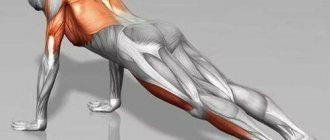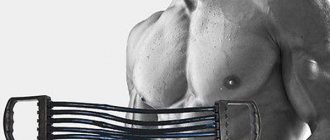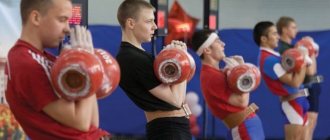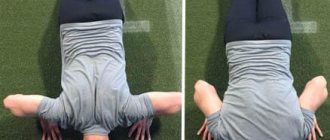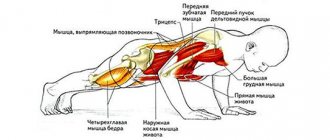Short-distance running stands out among other athletics disciplines for its features - increased intensity of loads, the ability to coordinate one's movements in a timely manner and the ability to gain high speeds in the shortest possible time. The most common way to overcome sprint distances is to run from a low start, which allows you to develop maximum speed over a short period.
History of appearance
In 1887, at a competition among students at Yale University, USA, runner Charles Sherrill took a low start before the start of the race. He surprised and amused both his competitors and the judges, because at that time it was customary to start standing.
The judges at first did not allow Sherrill to escape from this position, but the athlete insisted on his own. And since such nuances were not spelled out in the rules, Charles had to be allowed to start from an atypical position. Much to the amazement of everyone present, he easily won the race.
As it turned out, the idea for an unusual start came to Sherrill while traveling around Australia. She watched a kangaroo and noticed that before jumping, the animal bends down to the ground, and this allows it to make a powerful push and reach speeds of up to 70 km/h.
Sherrill adapted this idea for running and began winning one competition after another. Experts became interested in the innovation, began to actively study it and came to the conclusion that the technique is very effective.
Remember your feet
When working on this point, special attention should be paid to the correct placement of both legs. It would also be incorrect for the athlete to move his chin back during the first step. This leads to disruption of the running rhythm and general coordination at the beginning of the movement, during which a rapid increase in speed is impossible. The chin turns up, which inevitably leads to the body straightening too quickly. It is also necessary to control this moment - monitor the work of the chin, which should be lowered and pressed to the chest.
If the hips rise too high on the first step, then the step will be too short and will immediately deprive the participant of the advantage. Therefore, the foot should be positioned low in relation to the running surface.
Why do you need a low start?
This technique allows you to push off powerfully from the track and make the starting acceleration more effective, which is very important in sprint disciplines, where every hundredth of a second counts.
marathon and half marathon training plans and start training today!
Compared to a high start, where the runner’s body is almost vertical and you need to spend extra time to move it forward, a low start makes it possible to place the center of gravity of the body far behind the fulcrum - the starting line.
Features of the exercise
Proper sprinting technique involves frequent and long strides. With each push of the leg, the athlete strives to cover as much distance as possible, while maximizing the pace of these pushes. You need to move at high speed, which requires a highly developed sense of endurance and coordination. It is important to fully concentrate on the task without being distracted by anything around you. The slightest loss of attention threatens a decrease in speed. A meter before the finish line, a special throw is made - it helps to activate the remaining strength for the final push. Athletes must be able to gain maximum speed from the very first seconds of the race and not lose it throughout the entire distance.
The average stride length of a well-trained sprinter is 200-240 cm (+40 cm to body length)
Kinds
Modern experts distinguish 4 types of low starts:
- Ordinary
The first block is located at a distance of approximately 1.5-2 stops from the starting line. The second is installed at a distance of 1-1.5 feet from the first.
- Stretched
With this type of start, the distance between the front block and the starting line is increased and is about 3 stops. The distance between the first and second blocks remains the same.
- Closer
In this case, measure 1.5 feet from the starting line, and 1 foot between the blocks.
- Narrow
Here the distance between the blocks is reduced to half a foot, and to the first block remains the same as in a normal start - 1.5-2 feet.
These types are used depending on the individual characteristics of the athlete, leg strength and his reaction to the signal.
How did sprinting come about?
The first mention of running competitions dates back to 776 BC. According to the studied ancient records, there were two popular distances - running in the 1st and 2nd stages.
A stade is an ancient Greek unit for measuring long distances. One stadia equals 192.27 meters. It is interesting that stages were used only when determining the distance of running competitions, and for other measurements other measures of length were used.
If you make a little association, you can understand that the favorite running distances of the Ancient Greeks were 192.27 and 384.54 meters. In modern sports, distances have been brought to a more convenient format - 200 and 400 meters.
Over time, new types of running appeared, such as running half a stage or 6, 10 or more. That is, all distances known today in athletics occurred already in 776 BC. We are talking not only about short, but also medium and long distances.
Starting blocks and their use
Starting blocks are a special device that allows an athlete to rest his feet on them and push off when starting. In those days when stadium surfaces were still cinder, athletes used a special spatula to dig holes in the track for a powerful first push.
In their modern form, starting blocks appeared about 40 years after the low start came to athletics. They are two small inclined platforms, adjustably mounted on a rigid metal frame. The angle of inclination, the distance between them, as well as the distance to the starting line can be changed at the discretion of the athlete.
The pads are fixed on the track using a certain number of spikes at their base, due to which they are motionless during the start.
Where are athletics competitions held?
Athletics competitions are held outdoors (stadium, highway, forest) and indoors (sports arenas, halls).
Interesting materials:
Why did Dubrovsky's father die? Whose flag is the white red cross? Whose index is 420300? Whose online store is JOOM? Whose operator is 800 555? Whose region is 8,900? Whose son is Andrei Grigoriev Appolonov Jr.? What do beavers eat? What is the larger surface area of the liquid? The greater the angle of incidence of the sun's rays, the higher the air temperature?
Technique
Running from a low start is divided into three phases:
- On your marks
On the command “to start”, the athlete rests his hands on the starting line, his legs are bent at the knees. In this case, one leg is placed slightly in front, the other – behind, and it is she who rests her knee on the track. The head is lowered, the gaze is directed downwards.
- Attention
At the “attention” command, the knee lifts off the ground, the pelvis rises, the shoulders move slightly forward, and the body weight is transferred to the front leg.
- March!
At the command “march” or the firing of the starting pistol, the athlete lifts both hands off the floor, the back leg makes a powerful push and the first running step, and the whole body rushes forward to the finish line.
How to train?
In achieving results in sprint running, the quality of execution of technical elements is of great importance. However, even high precision movements do not provide good results. Therefore, when training sprinters, much attention is paid to physical fitness.
An athlete's maximum speed depends on the length and frequency of the stride. The optimal period for increasing step frequency is between 10 and 14 years of age. However, the frequency can develop after 14 years until reaching adulthood.
A popular exercise for increasing cadence is high-knee running. The idea is to perform 3-5 approaches with a time limit of 20-30 seconds. In a period of 30 seconds, it is necessary to perform the maximum number of movements, but not to violate the technique of the exercise.
Regular stretching after the main workout allows you to develop step length. It is also worth paying attention to the stride length when covering the sprint distance itself.
Rules
In addition to certain body movements that the athlete makes depending on the judge’s three commands, there are also low start rules.
- During the “start” command, the athlete’s hands should not cross the starting line even one centimeter.
- The judge will not give the command “attention” if at least one of the race participants is not frozen motionless in the starting blocks.
- Sometimes, in the “start” position, the athlete may feel that the pads are installed inconveniently or that something is bothering him. Before the “attention” command, he has the right to raise his hand and leave the starting blocks. In this case, the starter raises all the participants in the race and the command “to start” is given again.
- If, on the command “attention”, one of the participants runs out of the blocks before the shot or even simply jerks his shoulders forward, the judge raises all the athletes or fires two shots from the starting pistol in a row and declares a false start.
False start is translated from English as “wrong start.” In some races there could be as many false starts as there were participants on the track, and this provided a certain loophole for the moral destruction of opponents.
Then the rules were tightened: after the first false start, the participant received a warning or a yellow card, after the second, he was withdrawn from the competition. In modern conditions, any participant who makes a false start is automatically disqualified.
Even the masters of athletics do not escape this fate. The great sprinter, multiple world champion and Olympic champion Usain Bolt made a false start in the 100m final at the World Championships in Daegu in 2011 and was disqualified. These are the current rules that do not allow mistakes.
Read on topic: 20 fastest sprinters
Finishing
In sprinting, it is extremely important to be able to finish correctly.
- Under no circumstances should you slow down; on the contrary, it is recommended to gather the remaining willpower and make the most powerful push;
— There are 2 types of finishing throws on the tape - chest or side. Also, the athlete can finish without the final throw - he is allowed to be guided by personal preferences.
— In some cases, if the movement technique is not sufficiently refined or due to the inexperience of the athlete, the finishing throw, on the contrary, can slow down the runner.
The technique of finishing a sprint requires the athlete to perform only one task - to finish the race with maximum speed.
Errors during execution
The most common mistakes when performing a low start are:
- When executing the “attention” command, raise your head and look at the finish line. In this case, at the signal from the starting pistol, the athlete will inevitably jump up and straighten up sharply, which means he will immediately lose the advantages of a low start.
- Place the rear pad too far from the front. From a position where the back leg is far and practically straightened, there is no spring effect and it is impossible to make a powerful and strong push forward.
- Place the blocks too narrowly apart and too close to the starting line. The first movement will be short and weak.
- Do not push off from the blocks, but simply get out of them and only then run. This is what beginners often do. In this case, precious seconds intended for overclocking will be lost.
What to do
Athletes commit most incorrect actions when the “March” command sounds. The main one is to almost immediately straighten your torso to a vertical position. The step with the swing leg is weak and too small. This immediately leads to a significant loss of starting speed. You can correct the situation by starting with keeping your body in an inclined position.
During training, it makes sense to limit the process of straightening the body using additional means. The latter can be an inclined bar or a tourniquet stretched over it.
If the leg muscles (mainly the thigh muscles - its front surface) of athletes are not yet sufficiently developed, you can practice using small jumps from a squat or half-squat position.
Another common mistake is taking too much of a first step with the swing leg, which automatically causes a short stop and loss of speed in the subsequent step. It is advisable to perform the first step more actively, placing your foot under you. During the training process, it makes sense to put painted marks on the track for the initial steps.
Body position
Any movements from the start must be coordinated. The position of the head is also of great importance here. Premature straightening of the body is facilitated by a sharp backward movement of the head. And if you press your chin to your chest, you will begin to mark time, rather than speed up. While running, the body maintains a slight tilt with weight transferred forward.
Correct and even posture.
A strictly vertical position of the spine will help reduce tension in the muscles of the neck and back .
There is no need to shift all your weight forward and try not to fall. It is important to lean slightly here to move faster without losing your balance.
You should also not lean back. As a runner approaches the finish line and looks back, he changes his body position. This slows him down significantly.
Hand movement
Bent elbows produce movement according to the rule of cross coordination. This method helps while running, as the athlete maintains balance and straightness. Another important point is the movement of the shoulder joint. The arms move forward and in, back and out.


